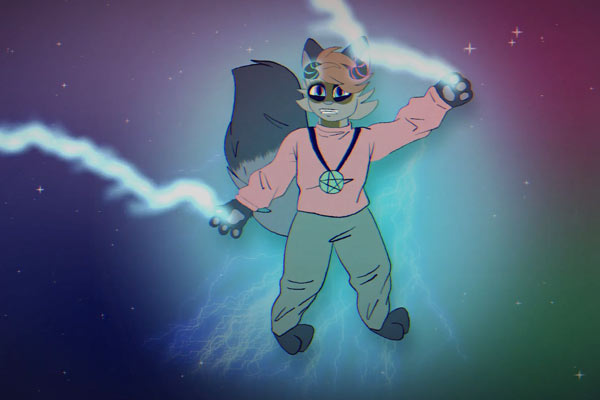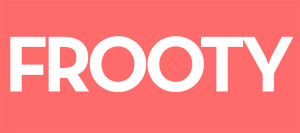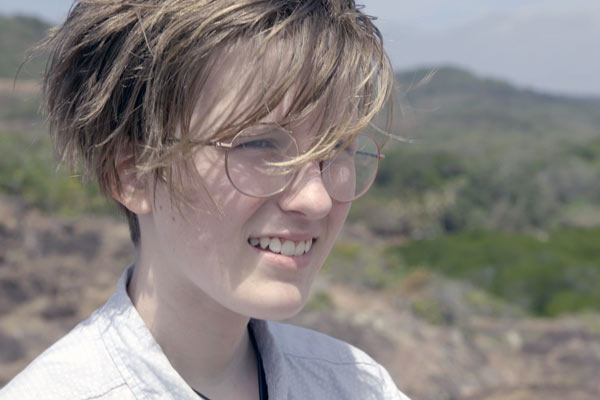One of these is 'Who I Am', a 30-minute exploration of a transgender teen on the autism spectrum named Charlie, who enlists his own original animated characters, called The Fallens, to stand by his side and support him.
This funding from Screen Australia aims to shine light on issues including mental health, wellbeing, racism, and more.
The documentary is written, directed and produced by Naomi Ball, joined by David Elliot-Jones and Cadance Bell.
Here, we catch up with Cadance Bell who tells us about what audiences can expect of the project, and her involvement in it.
What does it mean to you to have Screen Australia's support for this project?
Immediately, Screen Australia's backing gives confidence to other donors. It's a tick of approval and elevates our film into a prestigious category. It allows us to formally green light the project and to get stuck in with a high degree of quality. Screen Australia are tremendous at giving filmmakers the latitude to tell their own stories, while also providing valuable feedback.
Tell us a little bit about 'Who I Am'.
'Who I Am' is one of the (if not the) world’s first documentaries to explore the surprisingly common crossover of autistic and trans identities. Research shows that people on the spectrum are more likely to be trans or gender diverse, but little is known about why. In Australia 22.5 per cent of trans and gender diverse youth also have an autism diagnosis, and 3 per cent of Australians identify as transgender – that's a lot of people! The film explores this intersection through the eyes of Charlie, a non-binary trans masculine teen on the autism spectrum, as he learns to stand up for himself and find the support he needs with the help of his own original animated characters, called The Fallens. We have support from the Royal Children’s Hospital Gender Service, and Amaze, an autism support and advocacy organisation, and Minus18 – an LGBTQIA+ youth advocacy org. These organisations see a real need for this story to be told, and we’re planning to work with them to build other educational content around the film.
The film uses animation to tell some of its story. How is this achieved?
Charlie isn't just the protagonist of our story – he's also on the crew! He designs the characters, known as The Fallens, which are then animated by Juliet Rowe. The Fallens are one of the ways Charlie communicates what can be quite complex terrain for any teenager. Through his characters, we see a window into his soul. The animations will be used to augment beats of the story, while also lending it a unique, personal style.
Your previous work 'The Rainbow Passage' was funded through Screen Australia too – what was that about?
'The Rainbow Passage' was funded as part of the Out Here initiative, a collaboration between Screen Australia and Network Ten, which championed LGTBQIA+ filmmakers in regional areas. It was one of three films commissioned. I wrote and directed 'Rainbow', which followed myself and my partner Amanda, along with our friends Hannah Maher and Jordan Raskopolous. It was an intimate, uplifting documentary which focused on the lovely side of gender transition – in stark contrast to a lot of the 'doom and gloom' or medical curiosity narratives which had persisted in the space for years. It was very successful, opening to a sold-out crowd at the Sydney Mardi Gras Film Festival before streaming for 12 months on TenPlay. We still get lovely messages about it from people in the LGTBQIA+ communities, and the parents of trans kids. It was just this month selected for special screening in the Korean Queer Film Festival – a part of the film was shot in Seoul, a city we adore.

Where and when did you discover a passion for the world of film?
My love for film is an extension of my love of storytelling. My most formative experiences were as a teenager, getting to spend time on the set of 'The Nugget', a comedy starring Eric Bana. The film shot outside our house in my hometown of Mudgee and talking with Eric and director Bill Bennett and seeing the camera tech up close was intoxicating. I later spent some time as a teen on the sets of the 'Matrix' sequels, where I met the directors, The Wachowskis, who were brothers at the time. I broke a piece of the Nebuchadnezzar - the ship Neo, Trinity, Morpheus and their crew pilot in the film (something I'd kept secret until recently). Later, when the Wachowskis transitioned genders, their doing so publicly had a big impact on my own gender transition – so they were mentors in both filmmaking and identity for me.
Why do you think documentary is a powerful medium for delivering messages?
Documentary gives Australians a sense of who we are as a people. As a genre, it can be both a time capsule and a time machine in one. Doco gives voice to the unspoken, it amplifies stories which might otherwise go unnoticed. It is the closest cinematic experience we have to sitting around a campfire, spinning a yarn about our adventures. It enlightens, entertains and defines.
Where did the idea come from to create a documentary from this story?
Full credit must be given to our writer/director, Naomi Ball. She met Charlie and his family a few years ago while filming a charity campaign. At that time Charlie was planning to come out as trans to his mum. The timing was uncanny as Naomi herself had only just come out to her parents as lesbian. The pair, despite being 17 years apart in age, connected over the shared experience. I met Naomi at the Melbourne Queer Film Festival, where she came to watch 'The Rainbow Passage'. She told me about this story of Charlie and his family and I was hooked. We recognised it as not just a great coming-of-age story in its own right, but as a great opportunity to explore the intersection of gender identity and neurodivergence – an area which has only recently begun to gain traction in the public eye.
What are you hoping audiences take away from the documentary?
Above all – it's a great story. Even if they're just coming to see the lovely journey of Charlie and his family, audiences will get a lot out of it. We’re hoping this film will provide a voice to youth like Charlie and build awareness and community support, especially among young people, health professionals, educators and parents. It's also about the numbers: We want to shine a light on neurodivergence and gender identity, and particularly the intersection. In the general Australian population, only about one to two-point-five per cent of people have an autism spectrum disorder (ASD). But within the trans community, it's more than a fifth of Australians! My trans fiance Amanda is on the spectrum herself. There can be additional barriers for teenagers at the intersection to access mental health and medical care – such as finding a psychologist who is across both the autistic and trans experiences. Given that 72 per cent of trans youth have experienced depression and/or anxiety, we're talking about a particularly vulnerable segment of the population who could really benefit from representation and awareness. Shining a light on these experiences, while also telling a lovely story – what a fantastic way to help our communities and entertain people at the same time. It's so exciting! Finally, we want to call out a lot of far-right commentary in Australian media which says that because someone is autistic that they can't determine their own gender identity. Telling teenagers that they can't be themselves because they're neurodivergent is a special breed of cruelty, which will only see them suffer unnecessary gender dysphoria. They know who they are and we must support them. We might have won marriage equality, and trans teenagers now have better access to gender-affirming medical care, but it’s an ongoing battle to keep and further our civil rights.






